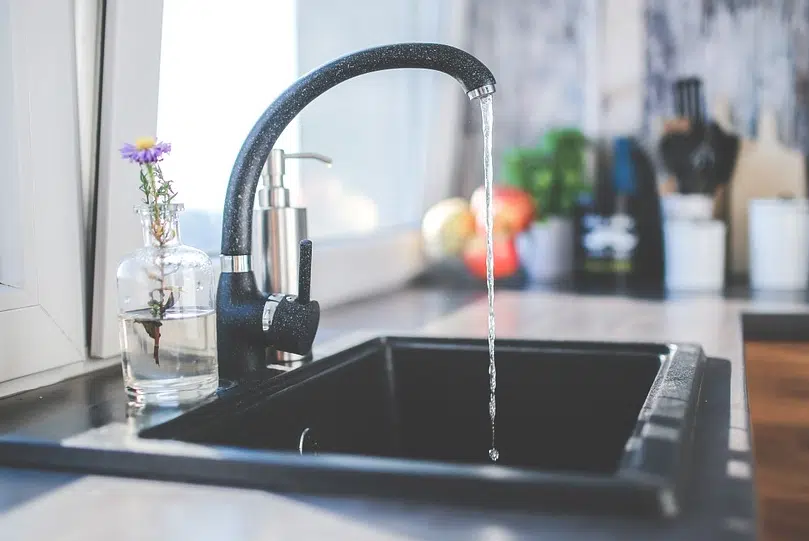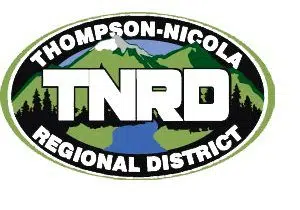
The City of Kamloops has unveiled details about its new drought response plan as it inches closer towards Drought Level 5 for the first time in its history.
Utility Services Manager, Greg Wightman, told City Council Tuesday that the hot and dry weather has led to extreme conditions and low river levels on the North and South Thompson.
“These are really concerning and really wild,” Wightman said.
“[Water levels] on both rivers were both the lowest they had been on record through the months of April leading into May, and then spiked quickly with that warm weather that we had in May and then dropped to points that we have never before as far as how low we are.”
As of July 20, eight out of 34 water basins in British Columbia were at Drought Level 5, the highest level on the scale. Both the North and South Thompson basins were at Drought Level 4, with the Lower Thompson currently at Drought Level 3.
Low water levels and a high risk of drought across the province has led both the City of Kamloops and the BC Government to urge people and businesses to make water conservation a priority.
“We have taken steps to reduce overall city irrigation by 25 per cent,” Wightman added.
“Our parks operations team has worked very, very hard to get that done. Obviously, there are a ton of irrigation systems that we operate on fields around the city, so they’ve had a lot of work to do there.”
The City of #Kamloops has released its drought-response plans at council this afternoon.
We are currently at Level 4, with Level 5 expected soon. pic.twitter.com/tXLHFHV9SH
— Victor Mario Kaisar (@supermario_47) July 25, 2023
At Stage 1 of the two-stage plan when the City reaches Drought Level 5, the City will look to maintain that 25 per cent reduction in water use while also only permitting irrigation to take place using hand-held spring-loaded nozzles.
“That is different than what we reported a couple of weeks ago where we were thinking we would ban outdoor irrigation and we did hear some comments from councillors, Councillor Neustaeter in particular, about gardens and food security in backyards,” Wightman said.
“This handheld spring loaded nozzle does allow you to continuity to do that. It won’t be as effective as sprinklers but it should result in a reduction in overall water use while still keeping gardens alive.”
Stage 2 of the Level 5 emergency restrictions will include bans on vehicle washing, boat washing, and pressure washing. The City will also limit the use of water by reducing the amount of testing and flushing of fire hydrants, and only use water for dust suppression when its practical.
It will also see Community Services Officers move from an education-first approach – where they hand on leaflets to people found in violation of the restrictions under the current Drought Level 4 – to an enforcement-first approach.
“We do have mechanism within our Waterworks bylaw that allow Community Services Officers, at this point, to start ticketing if people aren’t willing to comply,” Wightman said.
He says the purpose of restricting water use is to ensure there is capacity in the City’s reservoirs to support emergency fire suppression efforts, if needed like during the Juniper Ridge fire on Canada Day in 2021.
Other new measures of the plan will see the release of weekly updates on City-wide water use, with staff also planning to reach out directly to high water users.
“And just really trying to educate the public as much as we can about not only what they have to do, by why they have to do it,” Wightman said. “Obviously [its] not as visible as not seeing sprinklers running, but we do have a list of some of our top water users and we’ll be communicating with them directly.”
“We’ve got some very extreme measures up here – things that we’ve never seen in the City of Kamloops but we have never seen the river levels that we’ve seen and we’ve never seen the temperatures that we’ve seen,” he added.
“The measures kind of correspond to the extremes that we’re seeing this year.”

Drought conditions in BC as of July 20, 2023 (Photo via BC River Forecast Centre)
Wightman says it is possible that the City of Kamloops could be put on Drought Level 5 as soon as this Thursday, when the B.C. government updates the situation around the province.
“We’re right at the cusp right now, and one of the things that we will be asking if there is any way that we can not go to Drought Level 5 this week, given what is going on around our community,” he said. “That would be super helpful [to ease fears given the Ross Moore Lake fire].”
“Obviously its a balancing act, as always, trying to protect our environment, trying to protect our water system, but also acknowledging that we have a fire right now that is causing fear and anxiety around town.”
But even if Kamloops was put on Drought Level 5 this week, Wightman says it doesn’t mean these new water restrictions will be implemented right away.
“It means that we start considering them,” he said. “We consider all of the factors that are at play at the time.”
As for why two stages of restrictions within Drought Level 5, instead of one larger all encompassing one?
“I think its something that everyone around the province is struggling with right now. We’ve got a zero to six drought level system and we are at four and it is July. So what happens when we go to five? How do you indicate that it is getting worse? That is what we have tried to incorporate,” Wightman told Councillor Kelly Hall, who asked the question.
“The province can’t change its drought level system mid-season so what we’ve done with that two stages is if we do get the Drought Level 5 say in a week, what happens in the middle of august when we are in a worse situation? So we did want to have an increasing amount of restrictions.”
“We’re also trying to do the lest impactful things that we can but still produce the results that we are looking for so certainly not being able to wash your vehicle brings additional complications than not being able to water your lawns, so that is the reason for two stages.”
For more on drought information in the City of Kamloops and water conservation, go here.













